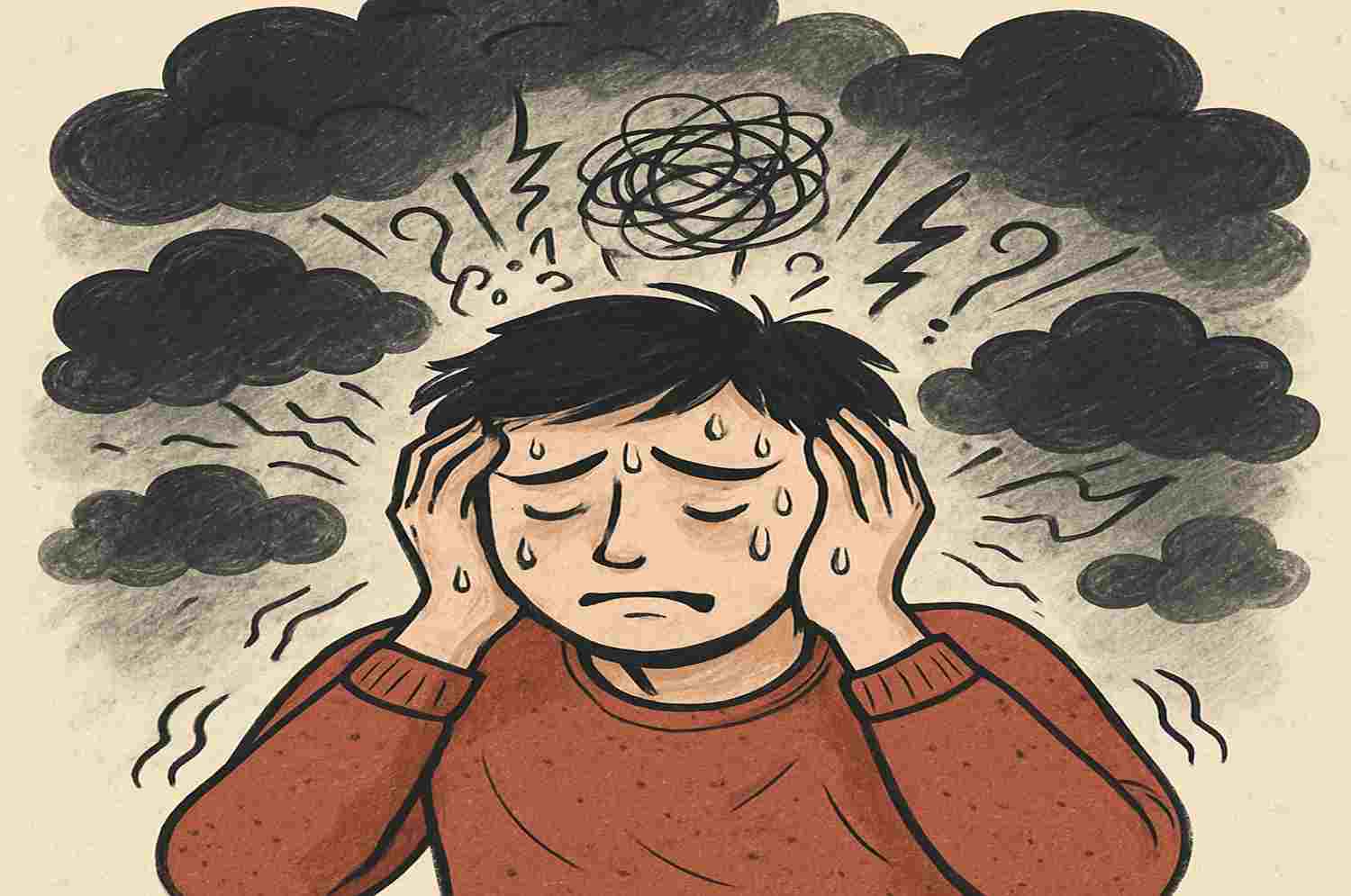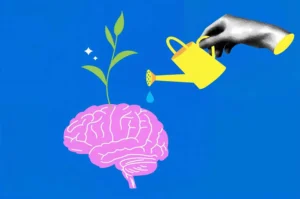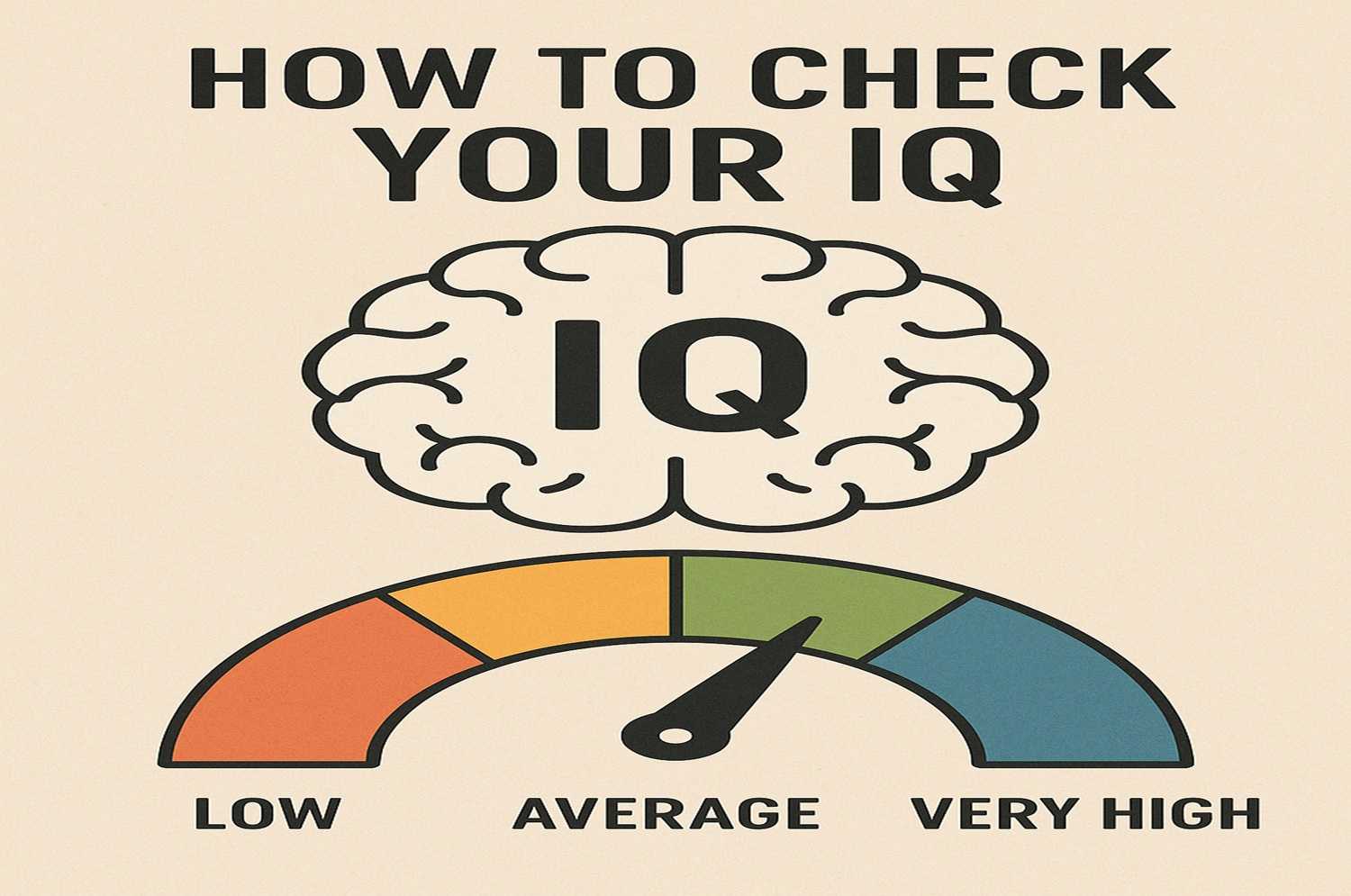Do you feel nervous, overworked, or simply tense without any apparent reason? Believe me, you’re most certainly not alone in this. Anxiety disorders affect millions of individuals worldwide. But here’s the good news—there are real, proven techniques to help you control it, even naturally. Throughout this guidebook, we’ll discuss the reasons why, the signs that tell you, and some simple techniques to aid you in getting your mental peace back.
Table of Contents
ToggleWhat Is Anxiety Disorder?
Sure, let’s take a look at the reality anxiety is not that which is out of the ordinary; it is a very much a part of what we experience daily, in fact in today’s fast paced business environment it is almost a given. We all have had that knot in the stomach before a large client pitch or a critical decision. It is normal. What is not normal is when that which is supposed to be a response to the moment becomes a constant, that which grows and grows to the point it is affecting your productivity or focus. That is when it may cross over into something more serious possibly an anxiety disorder.
And see, we didn’t find these disorders to be rare at all. In fact millions of us around the world report in to very high levels of stress and worry which don’t go away after we meet that next deadline. We aren’t just talking a little stress here we are talking full on anxiety that takes hold and doesn’t let go which really does play havoc with your work and personal life. The good news though? This isn’t a dead end. With the right support structures and management strategies in place, anxiety disorders do in fact present what is a very manageable issue, which in turn allows you and your team to perform at your best.
Difference Between Normal Anxiety and an Anxiety Disorder
It’s important to distinguish between everyday anxiety and a clinical anxiety disorder. Here’s a quick comparison:
| Normal Anxiety | Anxiety Disorder |
|---|---|
| Temporary and linked to a specific event | Persistent and often occurs without a trigger |
| Doesn’t interfere significantly with life | Disrupts daily activities and relationships |
| Fades once the situation is resolved | May continue for months or even years |
| Motivates problem-solving and action | Causes avoidance, distress, or paralysis |
Example: Feeling nervous before public speaking is normal. But avoiding all social settings due to fear of embarrassment could indicate social anxiety disorder.
Common Types of Anxiety Disorders
Each type of anxiety disorder has its own unique symptoms and triggers, but all involve intense, uncontrollable fear or worry. Let’s explore the most common ones:
Generalized Anxiety Disorder (GAD)
GAD is characterized by chronic, excessive worry about a wide range of everyday matters — such as health, work, finances, or family — even when there’s little or no reason to worry. People with GAD often say they feel “on edge” or find it hard to control their worrying.
Symptoms may include:
- Restlessness or feeling keyed up
- Fatigue
- Difficulty concentrating
- Muscle tension
- Sleep disturbances
Panic Disorder
Panic disorder involves recurrent and unexpected panic attacks — sudden surges of intense fear or discomfort that peak within minutes. These attacks may come out of the blue, and many people describe them as feeling like they’re having a heart attack.
Common symptoms:
- Rapid heartbeat
- Shortness of breath
- Chest pain
- Dizziness
- A fear of losing control or dying
Over time, people may begin to fear the fear itself, avoiding situations where attacks have occurred before.
Social Anxiety Disorder
Also known as social phobia, this disorder involves an intense fear of being judged, embarrassed, or humiliated in social or performance situations. It goes far beyond shyness — it can lead to total avoidance of social interactions, impacting career, education, and relationships.
Typical fears:
- Public speaking
- Meeting new people
- Eating or drinking in front of others
- Being the center of attention
Phobias
A phobia is a strong, irrational fear of a specific object, situation, or activity — even though it poses little or no actual danger.
Common phobias include:
- Heights (acrophobia)
- Flying (aerophobia)
- Spiders (arachnophobia)
- Needles (trypanophobia)
- Closed spaces (claustrophobia)
People with phobias often go to great lengths to avoid the trigger, even when it disrupts their lives.
Separation Anxiety Disorder
Although commonly associated with children, separation anxiety disorder can affect adults as well. It involves an intense fear or anxiety about being separated from a person to whom one is emotionally attached.
Signs may include:
Physical symptoms (headaches, nausea) during separation
Excessive distress when anticipating separation
Reluctance to be alone
Nightmares about separation
Common Symptoms of Anxiety
Anxiety isn’t just “in your head”—it shows up in your body, emotions, and even how you go about your day. Whether you’re dealing with occasional worry or a diagnosed anxiety disorder, recognizing the symptoms is the first step toward managing it effectively.
Physical Symptoms
Anxiety can take a real toll on your body. When you’re anxious, your nervous system kicks into overdrive—your heart races, muscles tense, and digestion slows down. Some of the most common physical symptoms include:
- Increased heart rate or palpitations
- Sweating or clammy hands
- Shortness of breath
- Trembling or shaking
- Muscle tension or headaches
- Stomach issues like nausea, bloating, or IBS
- Fatigue, even if you’ve done nothing physically strenuous
- Sleep disturbances, such as trouble falling asleep or waking up frequently
These symptoms can be scary, especially if they mimic other health conditions, which is why anxiety is often misunderstood or misdiagnosed.
Emotional and Behavioral Signs
Anxiety also changes how you think and act. It can trap you in a loop of worry, make you fear the worst, or stop you from doing things you enjoy. Emotional and behavioral symptoms include:
- Excessive worrying, even about everyday things
- Restlessness or feeling “on edge” all the time
- Irritability or mood swings
- Difficulty concentrating or feeling like your mind goes blank
- Avoidance behaviors, like skipping social events or avoiding places that trigger anxiety
- Feeling overwhelmed or unable to cope
- Low self-esteem or self-doubt
These aren’t just personality quirks—they’re real, valid symptoms of a mental health condition.
How It Affects Daily Life
Over time, untreated anxiety can start to interfere with your relationships, work, and overall well-being. You might:
- Miss work or school due to panic attacks or chronic worry
- Struggle in relationships because of trust issues, overthinking, or emotional withdrawal
- Avoid important tasks like driving, public speaking, or even grocery shopping
- Feel isolated because it’s hard to explain what you’re going through
- Burn out emotionally and physically due to constant stress
It’s not just about “feeling anxious.” Anxiety can become a barrier between you and the life you want to live.
Expert Tip: If these symptoms feel familiar, don’t ignore them. Anxiety is highly treatable, and recognizing the signs is the first step toward getting support—whether through therapy, medication, or lifestyle changes.
What Causes Anxiety Disorders?
Anxiety disorders don’t just appear out of nowhere. They often result from a mix of biological, psychological, and environmental factors. Understanding the root causes can help in managing and even preventing anxiety symptoms. Let’s break down the key contributors.
Biological and Genetic Factors
Genetics can play a significant role in developing anxiety disorders. If you have a family history of anxiety, depression, or other mental health conditions, your risk may be higher. Certain genes affect how brain chemicals like serotonin, dopamine, and norepinephrine regulate mood and stress responses.
In addition, brain structure and function can also contribute. For instance, an overactive amygdala (the brain’s fear center) may cause heightened emotional reactions and make it harder to calm down after a stressful event.
But remember—genetics isn’t destiny. Just because anxiety runs in your family doesn’t mean you’re guaranteed to experience it.
Environmental Triggers
Sometimes, life circumstances can act as triggers for anxiety. Traumatic events such as abuse, loss of a loved one, or accidents can lead to lasting psychological effects. Even less extreme but chronic stressors like financial struggles, a toxic workplace, or academic pressure can push someone toward an anxiety disorder over time.
Childhood environment matters too. Overprotective parenting, neglect, or growing up in an unstable home can shape how a person responds to stress later in life.
These environmental triggers often interact with biological vulnerabilities, amplifying the chances of anxiety disorders developing.
Lifestyle and Substance Use
Your daily habits have more influence on your mental health than you might think. Poor sleep, a lack of physical activity, excessive screen time, and high caffeine intake can all worsen anxiety symptoms.
Substance use is another big factor. Alcohol, nicotine, and recreational drugs may initially seem like stress-relievers, but they often make anxiety worse in the long run. Even prescription medications, if misused, can contribute to anxious thoughts and feelings.
On the flip side, a balanced lifestyle—rich in exercise, sleep, nutrition, and mindfulness—can act as a natural buffer against anxiety.
7 Proven Ways to Manage Anxiety Naturally
Anxiety can feel overwhelming, but you don’t have to let it control your life. Natural anxiety management techniques can be highly effective—especially when used consistently. Below are seven science-backed strategies that can help you reduce anxiety, boost emotional resilience, and feel more grounded in your day-to-day life.
1. Practice Deep Breathing and Meditation
When anxiety hits, your body often goes into fight-or-flight mode—your heart races, breathing becomes shallow, and your thoughts spiral. That’s where deep breathing and meditation come in. Techniques like box breathing or guided mindfulness meditation help activate the parasympathetic nervous system, calming both the body and mind.
Start small: even 5–10 minutes a day of focused breathing can make a noticeable difference. Apps like Calm or Insight Timer can guide you if you’re new to the practice.
2. Create a Consistent Sleep Routine
Anxiety and poor sleep go hand in hand. If you’re not getting enough rest, your mind struggles to regulate emotions, making it easier to feel overwhelmed. Set a regular bedtime, avoid screens an hour before sleep, and create a calming pre-bed routine.
Think of your sleep routine like charging your phone—except you’re the device. Without enough power (rest), your system can’t function optimally.
3. Limit Caffeine and Sugar Intake
Caffeine and sugar may give a temporary energy boost, but they often lead to jitters, mood swings, and crashes—fuel for anxiety. Pay attention to how your body reacts after your second cup of coffee or sugary snack. If you notice more nervousness or irritability, it may be time to scale back.
Opt for calming alternatives like herbal teas (chamomile, ashwagandha) or snacks rich in magnesium and omega-3s, which support a balanced mood.
4. Exercise Regularly
Exercise isn’t just about physical health—it’s one of the most powerful natural antidepressants. Whether it’s a brisk walk, yoga session, or strength training, moving your body releases endorphins and helps burn off excess cortisol (the stress hormone).
Aim for at least 30 minutes of moderate exercise most days of the week. Bonus: outdoor workouts offer double benefits by connecting you with nature, which is calming in itself.
5. Journaling and Mindfulness
Sometimes, your mind needs a release valve. Journaling allows you to untangle thoughts, recognize patterns, and process emotions in a healthy way. Pair this with mindfulness—the practice of staying present—and you create space between you and your anxious thoughts.
Even jotting down three things you’re grateful for each day can shift your mental focus from fear to awareness and appreciation.
6. Build a Support Network
You’re not meant to do this alone. A strong support system—whether it’s family, friends, or a community group—can provide the emotional safety net you need. Talking to someone who listens without judgment can ease the weight you’re carrying.
Remember, connection reduces stress. Don’t hesitate to reach out, even if it’s just to say, “I need someone to talk to.”
7. Seek Professional Therapy (CBT, Talk Therapy)
Sometimes, natural strategies need a little extra help. Cognitive Behavioral Therapy (CBT) is especially effective for anxiety—it helps you identify negative thought patterns and replace them with healthier ones. Even regular talk therapy provides a safe, structured space to explore your emotions.
Seeing a therapist isn’t a sign of weakness—it’s an investment in your well-being. Many therapists now offer online sessions, making support more accessible than ever.
When to See a Mental Health Professional
Signs You Shouldn’t Ignore
Mental health concerns don’t always show up as loud cries for help—often, they’re subtle signs we tend to brush off. But just like physical health, your mental well-being needs attention. Here are key signs it’s time to speak with a mental health professional:
- Persistent Sadness or Hopelessness: If you’ve been feeling low for weeks and can’t seem to shake it off, it’s not “just a bad mood.” Chronic sadness may signal depression.
- Excessive Worry or Anxiety: Occasional stress is normal, but if anxiety interferes with your sleep, work, or relationships, it’s worth exploring professionally.
- Sudden Mood Changes: Intense mood swings, irritability, or emotional outbursts could be signs of deeper mental health challenges like bipolar disorder or unresolved trauma.
- Withdrawal from Social Life: Avoiding friends, family, or activities you once enjoyed might indicate depression or social anxiety.
- Changes in Appetite or Sleep Patterns: Overeating, not eating at all, insomnia, or oversleeping can all reflect underlying emotional distress.
- Difficulty Concentrating: Struggling to focus, forgetting things often, or feeling mentally foggy can be signs of anxiety, depression, or even ADHD.
- Thoughts of Self-Harm or Suicide: This is a medical emergency. If you or someone you know is experiencing these thoughts, seek help immediately. You’re not alone, and support is available.
These signs aren’t weaknesses—they’re signals. Listening to them is a powerful first step toward healing.
What to Expect During Treatment
Many people hesitate to seek help because they’re unsure what therapy or treatment actually looks like. Here’s what you can expect when you take that first step:
- Initial Consultation (Assessment): Your first session is usually a comprehensive evaluation. The therapist or psychiatrist will ask about your symptoms, history, and goals. It’s a safe, non-judgmental space to talk freely.
- Personalized Treatment Plan: Based on your unique needs, a tailored plan may include talk therapy (like CBT or psychodynamic therapy), medication, lifestyle changes, or a mix of approaches.
- Therapeutic Relationship: One of the most healing aspects of therapy is the relationship you build with your therapist. Over time, this trust helps you open up, process emotions, and gain new coping skills.
- Progress at Your Pace: Healing isn’t linear. Some sessions may feel emotional, while others may offer clarity and breakthroughs. Be patient with yourself—this is your journey.
- Tools & Strategies: You’ll learn practical tools to manage stress, reframe negative thoughts, and build emotional resilience that lasts beyond the therapy room.
- Ongoing Support: Regular sessions help track progress and adjust the plan as needed. Many clients report feeling lighter, more empowered, and better equipped to handle life.
Remember, reaching out for help isn’t a sign of weakness—it’s an act of strength and self-respect.
Read Also:
How to Meditate: Discover Powerful Meditate Benefits & Proven Meditation Benifits for Mind and Body
What Is Love? The Truth Behind the Most Powerful Emotion
FAQ:
1. What is the most common anxiety disorder?
Generalized Anxiety Disorder (GAD) is the most common, causing chronic worry over everyday things.
2. How can I know if I have anxiety or just stress?
Anxiety persists longer, affects daily life, and continues without a clear trigger unlike short-term stress.
3. Can anxiety go away naturally?
Mild anxiety may improve naturally with lifestyle changes, but chronic cases usually need professional help.
4. What foods help with anxiety?
Foods rich in magnesium, omega-3s, probiotics, and antioxidants—like leafy greens, nuts, yogurt, and berries.
5. Is anxiety disorder curable or just manageable?
Anxiety is highly manageable and sometimes curable with therapy, medication, lifestyle changes, and self-care.









